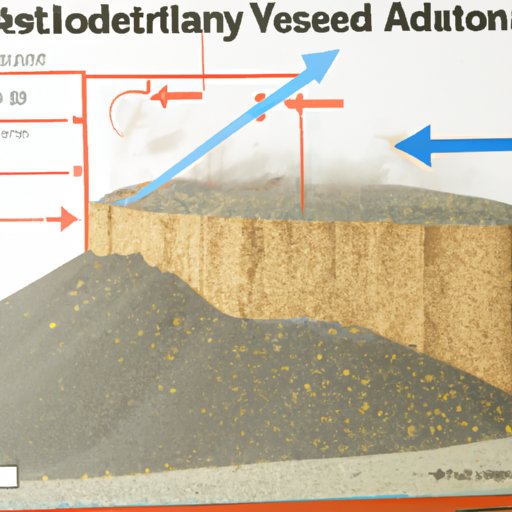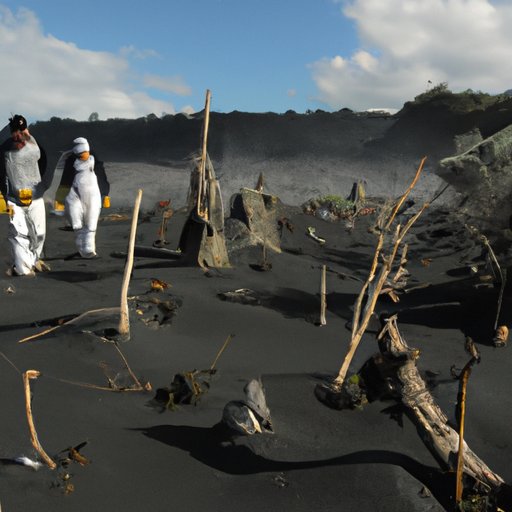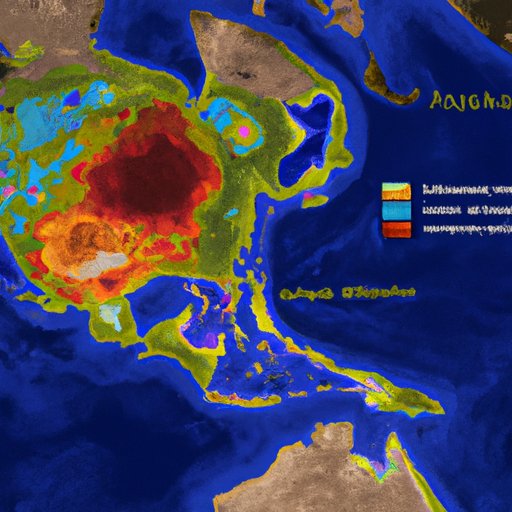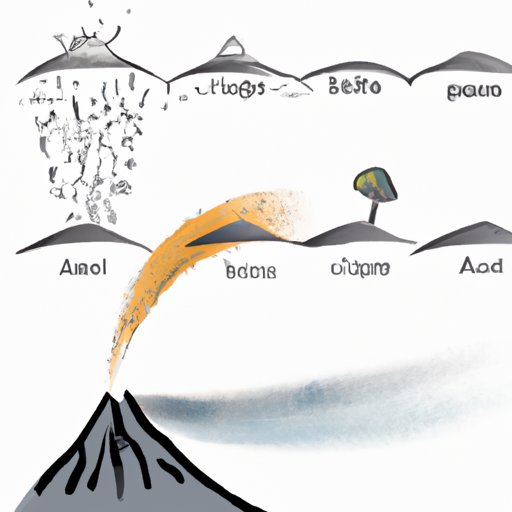Introduction
Volcanic eruptions are powerful natural phenomena that can have far-reaching effects on the environment. When volcanoes erupt, they produce large amounts of debris, including ash, rock fragments, and gases. Of these materials, volcanic ash is of particular interest because of its potential to travel long distances from its source. But just how far can volcanic ash travel? In this article, we will explore the science behind the transport of volcanic ash, examining a case study to understand the physics of volcanic ash dispersal.
A Case Study of Volcanic Ash Travel Distance
To better understand how far volcanic ash can travel, let’s take a look at a specific example: the eruption of Mount St. Helens in 1980. The eruption of Mount St. Helens was one of the most destructive volcanic eruptions in U.S. history, producing a plume of ash that rose 80,000 feet into the atmosphere. The ash from this eruption traveled all the way across the United States and was even detected in parts of Canada and Mexico.
The Mount St. Helens eruption is an extreme example, but it illustrates the point that volcanic ash can travel great distances. In fact, research has shown that the amount of ash dispersed by a volcanic eruption is directly related to the size of the eruption. Larger eruptions tend to produce more ash, which can then be carried farther away from the volcano.

Examining the Physics Behind Volcanic Ash Transport
So what factors influence how far volcanic ash can travel? To answer this question, we must examine the physics of ash dispersal. There are several factors that play a role in the transport of volcanic ash, including particle size, atmospheric conditions, and wind speed.
The size of the particles produced by a volcanic eruption is an important factor in determining how far the ash can travel. Smaller particles are more likely to be carried farther away from the volcano, as they are more easily suspended in the air. Larger particles, on the other hand, are more likely to fall out of the atmosphere closer to the source.
In addition to particle size, atmospheric conditions also play an important role in the transport of volcanic ash. High winds can carry ash farther away from the volcano, while low winds can cause the ash to settle closer to the source. Additionally, the temperature and humidity of the air can affect how far the ash can travel.
Tracking Volcanic Ash: From Eruption to Impacts
Now that we understand the physics behind the transport of volcanic ash, we can begin to track the movement of the ash from the eruption to its eventual destination. To do this, scientists use a variety of technologies, such as satellite imagery and computer models, to map the spread of the ash.
Using these tools, scientists can identify areas that may be impacted by the ash, allowing them to take necessary precautions to protect people and property. For example, if an area is predicted to be affected by a large amount of ash, officials may issue warnings or evacuate people living in the area.

Exploring the Impact of Volcanic Ash on the Environment
The spread of volcanic ash can have serious environmental consequences. Ash can reduce air quality by blocking sunlight and creating haze, leading to health risks for those exposed to it. Inhaling ash particles can cause respiratory problems, such as bronchitis and asthma.
Volcanic ash can also have an impact on the local ecology. Ash can contaminate water sources, making them unsafe for drinking or bathing. Additionally, ash can damage crops, leading to food shortages in affected areas. Finally, ash can cause infrastructure damage, leading to costly repairs.

Mapping the Global Spread of Volcanic Ash
To better understand the potential reach of volcanic ash, scientists are turning to data. By mapping the movement of ash from past eruptions, researchers can create models to predict the potential spread of ash from future eruptions. This information can be used to prepare for the potential impacts of an eruption, helping to minimize the disruption caused by the event.
Additionally, scientists are using data to analyze the global spread of volcanic ash. By studying the paths taken by ash over time, researchers can gain insight into how eruptions affect different regions around the world. This information can be used to create better strategies for responding to future eruptions.
Volcanic Ash: How Far Can It Go?
So, how far can volcanic ash travel? As we have seen, the answer to this question depends on a variety of factors, including the size of the eruption and the atmospheric conditions at the time of the eruption. However, research suggests that volcanic ash can travel great distances, potentially impacting areas thousands of miles away from the source.
It is important to note, however, that not all eruptions will produce enough ash to travel long distances. It is also important to remember that the impact of volcanic ash can vary greatly depending on the location. For example, ash may be more disruptive in areas with high population densities or in areas where there are already poor air quality conditions.
Conclusion
In conclusion, volcanic ash can travel great distances from its source, potentially impacting areas thousands of miles away. To better understand the potential reach of volcanic ash, scientists are utilizing data to map the movement of ash from past eruptions and to create models to predict the potential spread of ash from future eruptions. While some eruptions may not produce enough ash to travel far, it is important to be aware of the potential impacts of volcanic ash and to take necessary precautions to protect people and the environment.
(Note: Is this article not meeting your expectations? Do you have knowledge or insights to share? Unlock new opportunities and expand your reach by joining our authors team. Click Registration to join us and share your expertise with our readers.)
